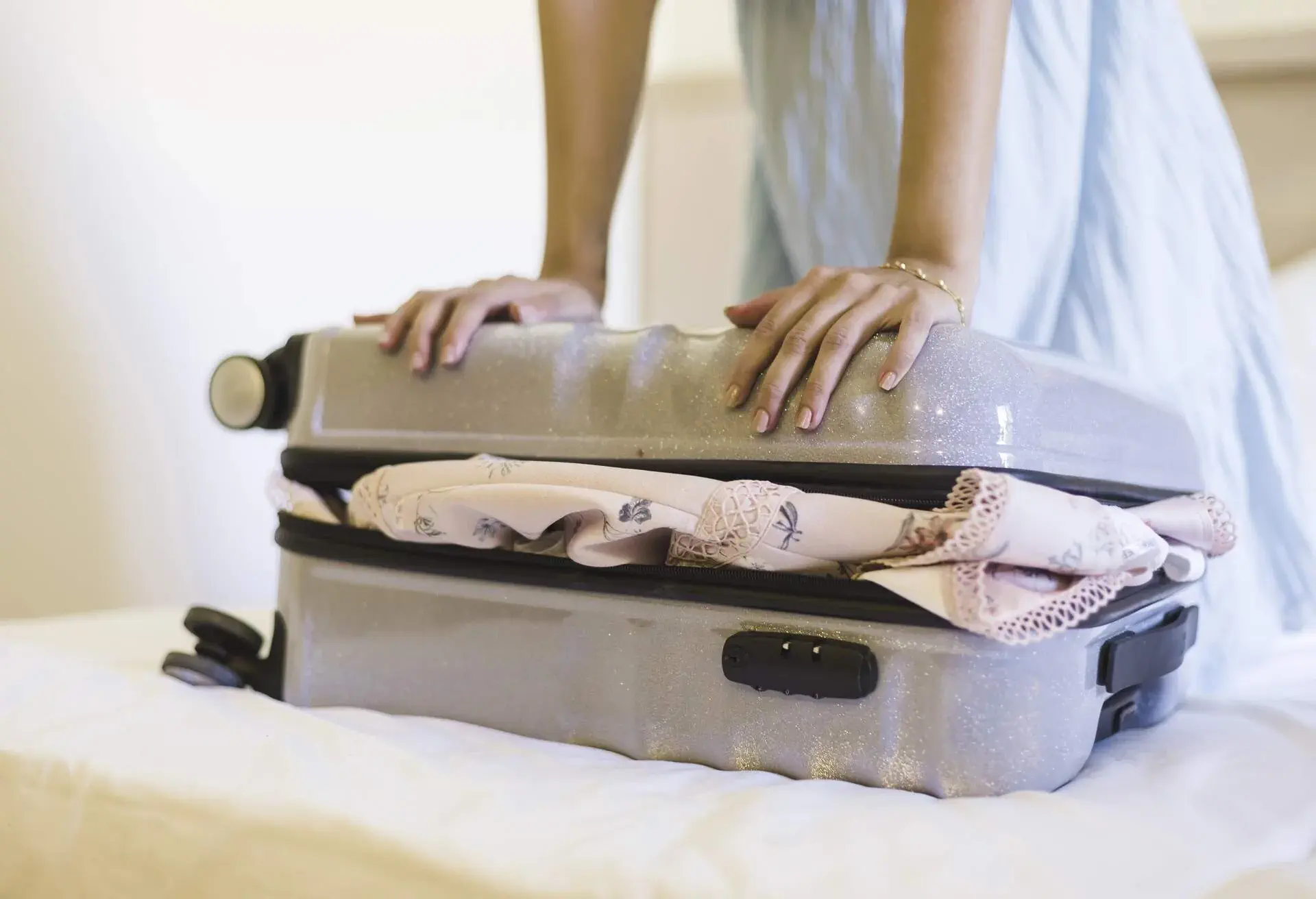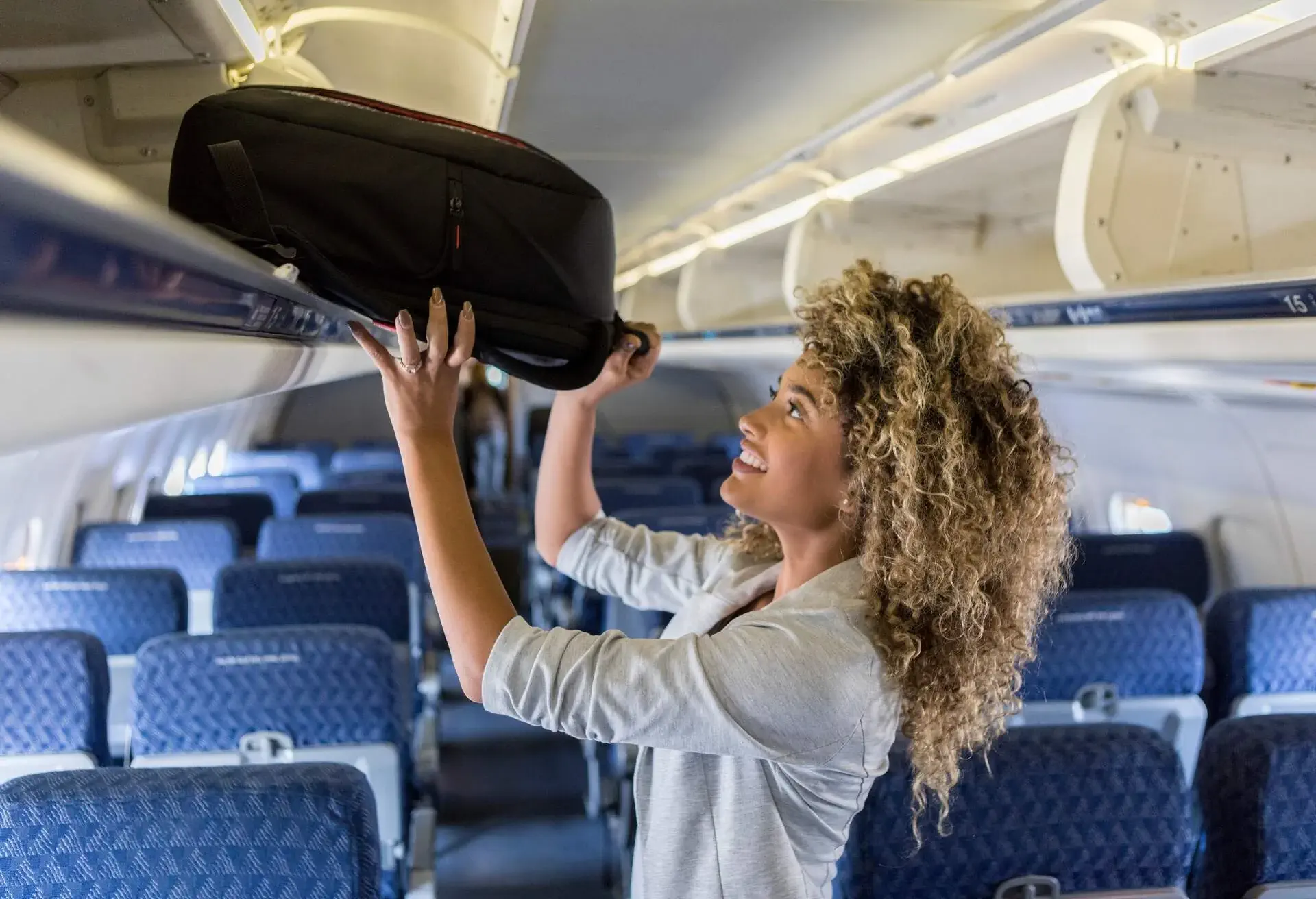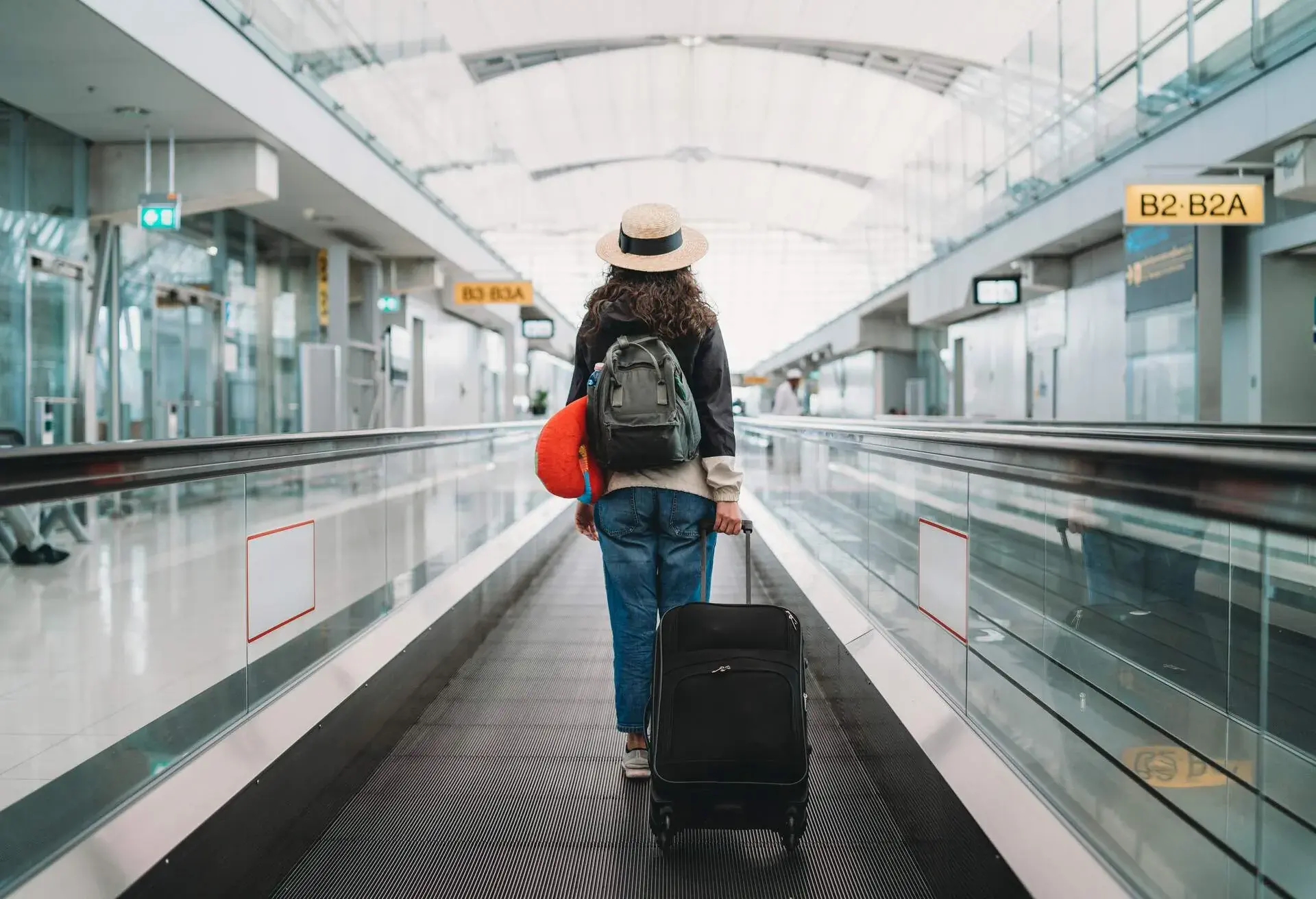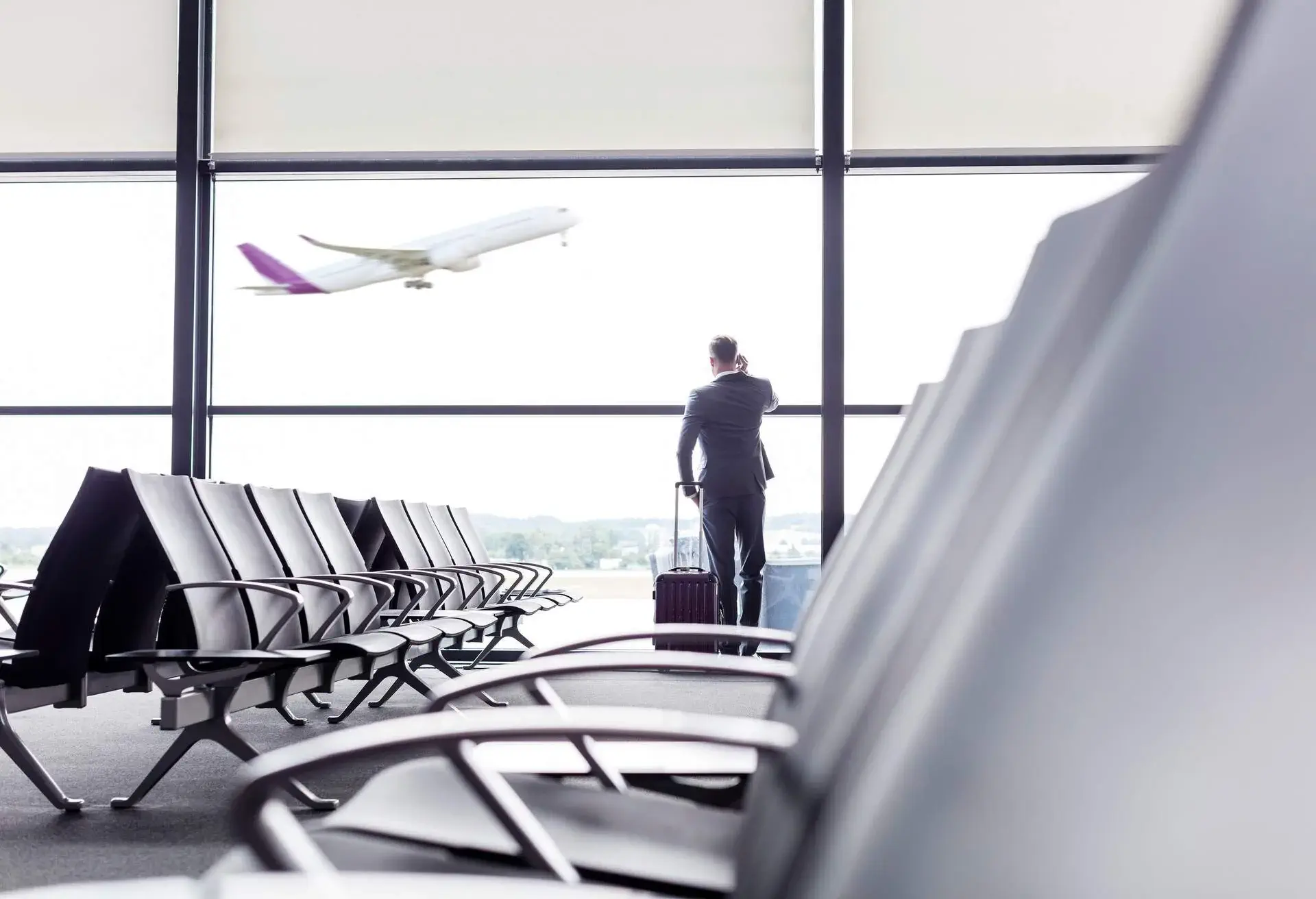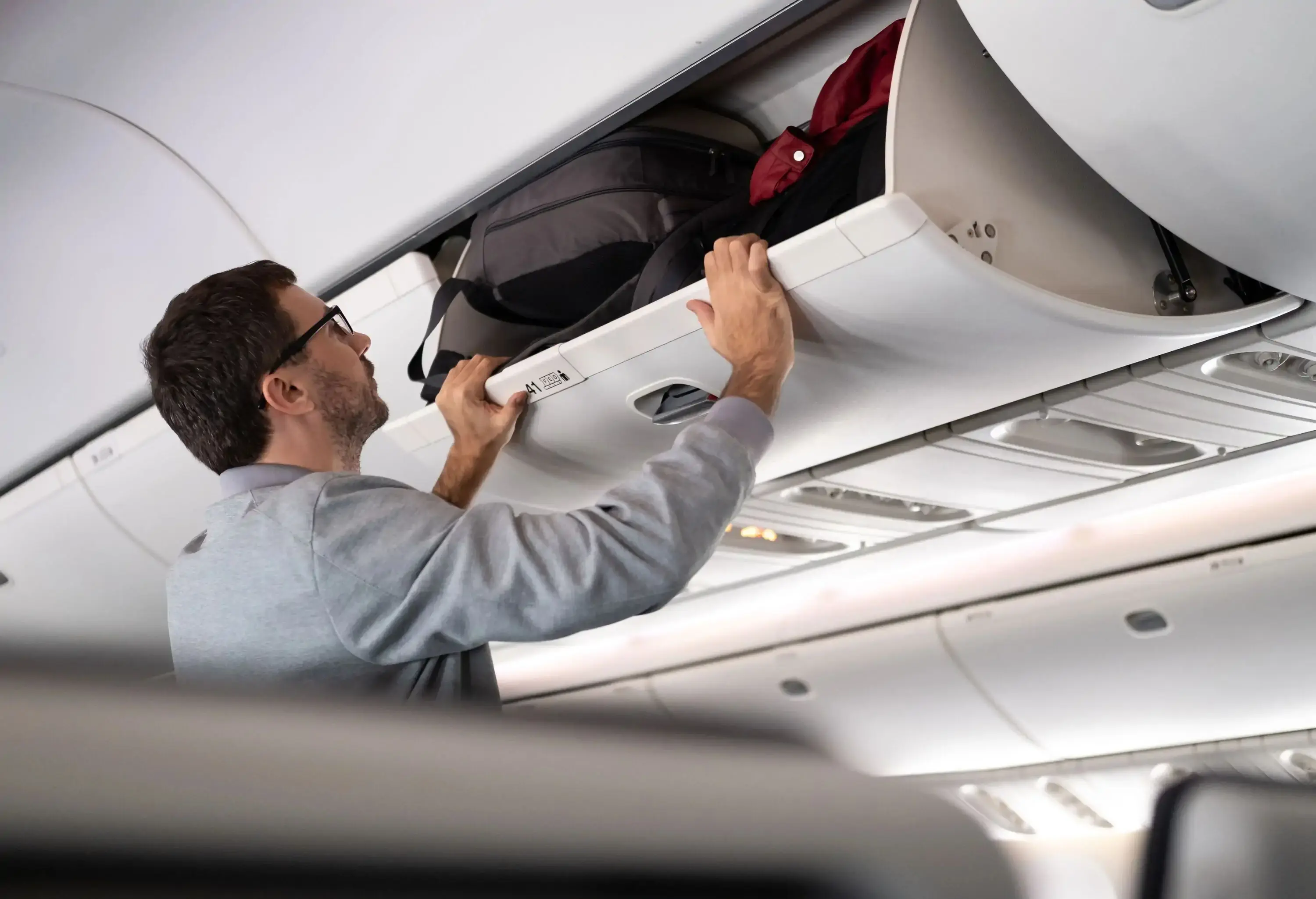These tips for how to pack a carry-on bag go far beyond trying to stuff everything you need into a single suitcase to avoid checking luggage.
From airline-specific allowances to surprise fees and prohibited items, packing a carry-on can get complicated. When it’s finally the night before you head to the airport, use KAYAK’s out-of-office generator for a sweet sign-off and this guide to get packing.
Types of carry-on luggage

Carry-on luggage comes in a surprising variety of styles. For those packing light, a small handbag or backpack can transport the bare essentials, but most will want to bring something more substantial. Traditional carry-on bags range from duffels to small suitcases or roller bags.
The ideal duffel bag size for carry-on luggage is the weekender style, which generally allows for two or three outfits, an extra pair of shoes, and a few personal items. Note that adventure duffels designed for gear may be too large for carry-on, especially if fully packed.
Roller bags are so-called for obvious reasons: They roll aboard the plane on either two or four wheels. These miniature suitcases come in both soft-shell versions, made from durable fabrics, and hard-shell cases, made from materials like polycarbonate plastics or aluminum. They’re great if you want to keep your things safe from getting squished in transit.
Carry-on baggage allowances
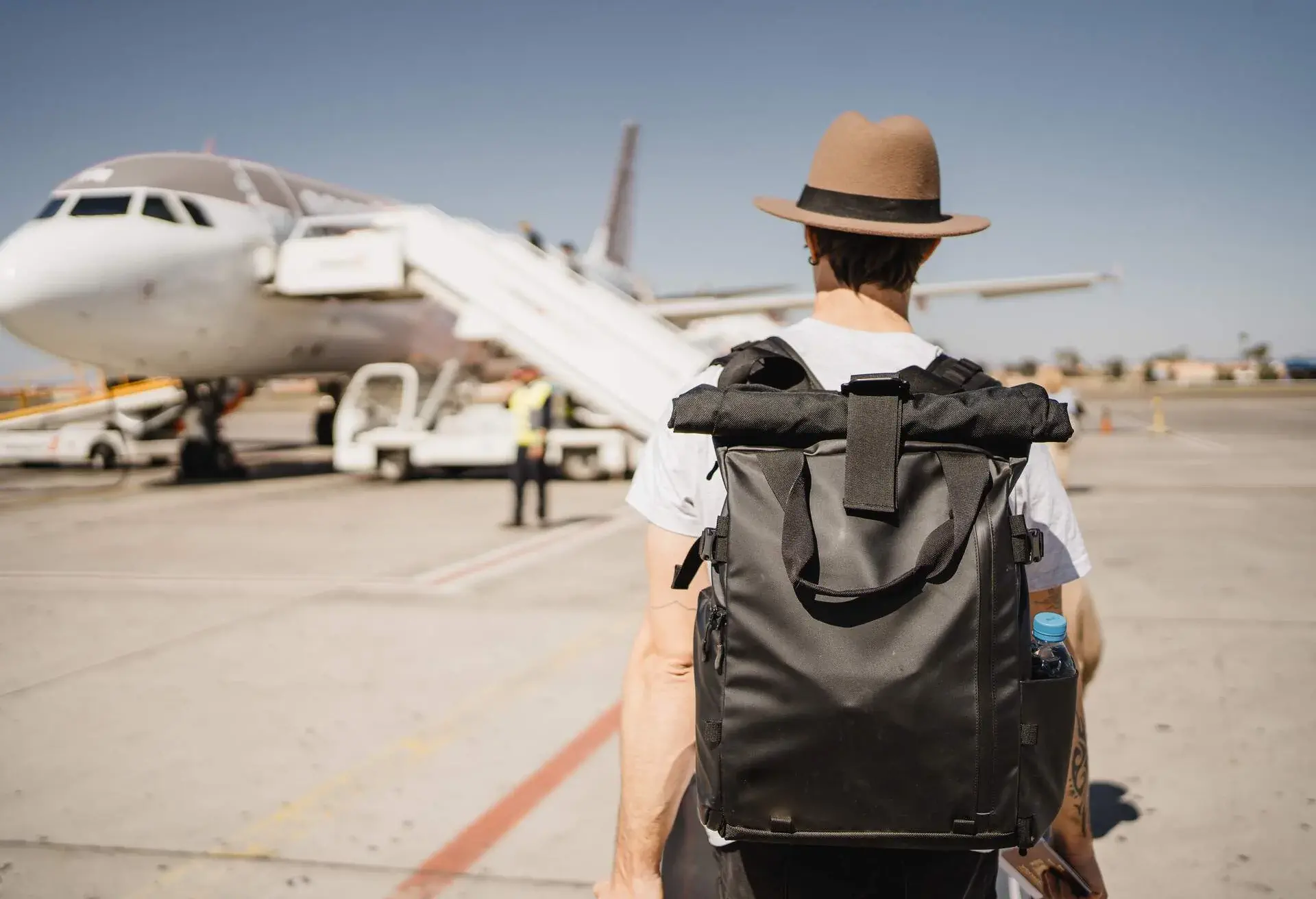
Most major US airlines allow passengers to bring one carry-on bag and one small personal item, like a handbag, briefcase, or umbrella. The good news is that you can typically bring these items onboard free of charge. But not all airlines are so generous. Budget airlines may charge for carry-on, regardless of whether you also checked a bag, and some may only allow a total of one item.
To be sure you aren’t hit with surprise charges for your carry-on bag, check the airline fees page for a quick reference. Because most airlines don’t charge for a carry-on, you won’t find a separate column for this. But you can find any known carry-on fees under the first column, “Checked Baggage.” If you haven’t chosen your airline yet, KAYAK offers a Baggage Fee Assistant on every flight search results page. Select your number of carry-on and checked bags at the top. Your search results will show updated rates that include your baggage estimate.
Here are the guidelines for some popular US airlines:
- Southwest Airlines
- American Airlines
- Frontier Airlines
- Spirit Airlines
- Hawaiian Airlines
- Alaska Airlines
Confirm your carry-on is size compliant
Your carry-on items need to fit fully under the seat in front of you, or in the overhead bin. Therefore, they need to meet size requirements. Your bag must stay under specific dimensions that vary slightly by the airline. You can calculate this by adding the total inches of your bag’s height, width, and length. Be aware that this includes any handles, wheels, or attachments.
Fetch some measuring tape and start calculating, or let KAYAK help you out. The mobile app offers a Bag Measurement tool that provides accurate measurements from a live scan of your bag. It’ll let you know if your bag is allowed aboard your desired flight (or others). This tool isn’t just easy – it’s fun. Watch the video below and see how it works.
Technically, your carry-on bag will need to meet weight requirements, too. Most major US airlines enforce this rule far less than the size regulations. Flight staff will often eyeball carry-on bags rather than weigh them. But try to avoid filling yours with heavy items just in case. They’re allowed to weigh your carry-on bag and prevent you from boarding with one that’s too heavy. Your airline’s website will provide this weight limit.
Best way to pack a carry-on
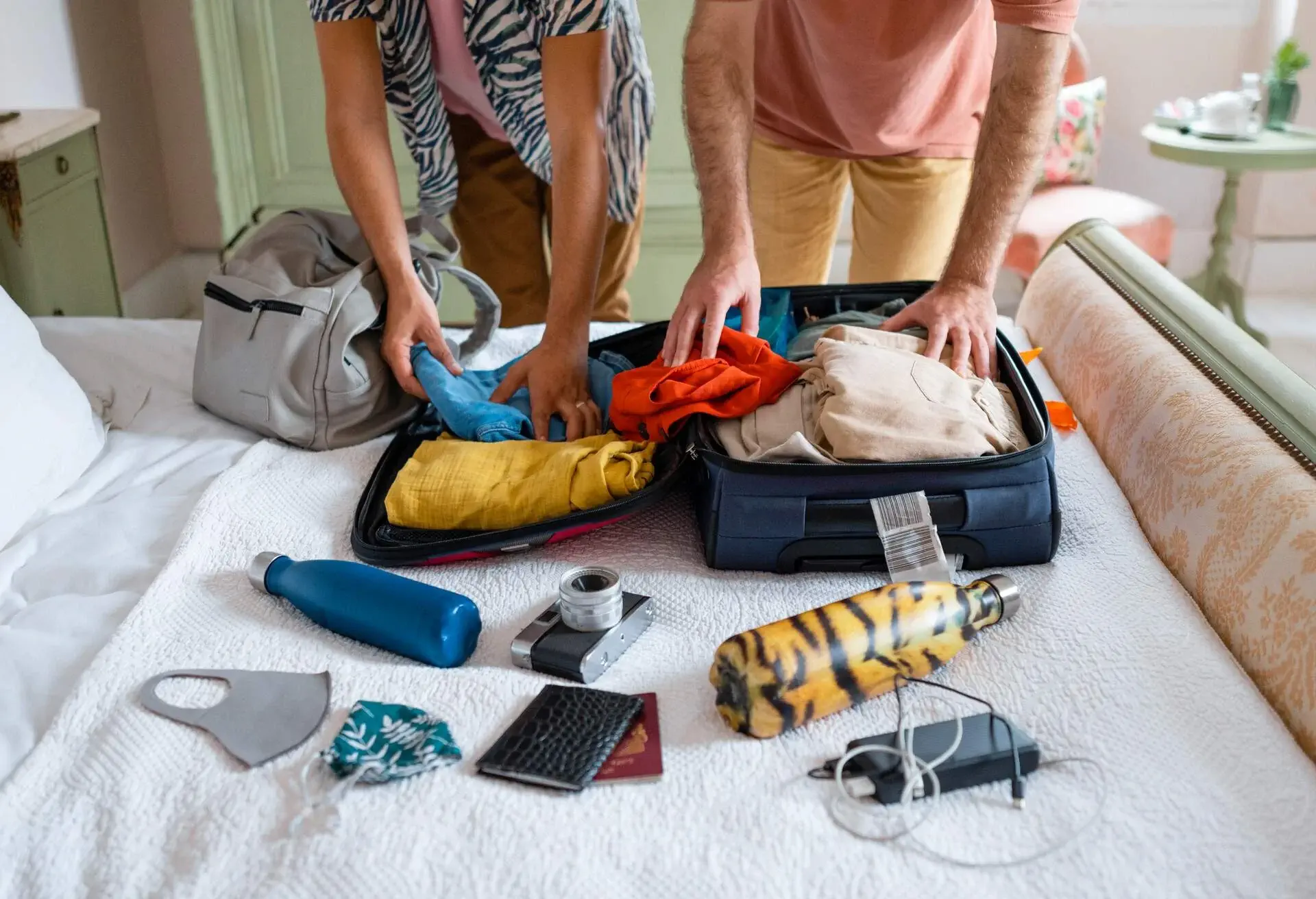
Keep in mind that there are plenty of prohibited items when it comes to packing your carry-on bags. Countries generally determine these rather than the airlines themselves. Once you’ve ensured you’re not trying to bring anything questionable on board, it’s time to consider what you’ll actually need during your trip.
There are two main reasons most people will opt to bring a carry-on. Either to avoid checking a bag, or to ensure you’ll still have your essentials if your checked bag is delayed or lost. If you want to avoid checking a bag entirely, your number one packing goal should be minimalism.
For longer trips that really stress your carry-on space, pack lightweight fabrics. Also consider items that can mix and match to create multiple looks without packing additional items. Keep bulky footwear to a minimum, and avoid bringing toiletries, like shampoo and sunscreen, that you can easily purchase at your destination if space is tight.
Regardless of the trip duration or whether you also have a checked bag, there are a handful of items everyone should bring onboard. You shouldn’t check valuables, like expensive jewelry and small electronics. You’ll also need identification documents on both ends of your flight. So be sure these are always with you, too. Finally, keep anything that you need every day, like medications, in your carry-on – in case other luggage is delayed or lost.
If space allows, it helps to make sure you have at least one full outfit in your carry-on, even if you checked a bag. In case of baggage delays, you’ll be grateful for the clean change of clothes the next day.
Tips for packing a carry-on
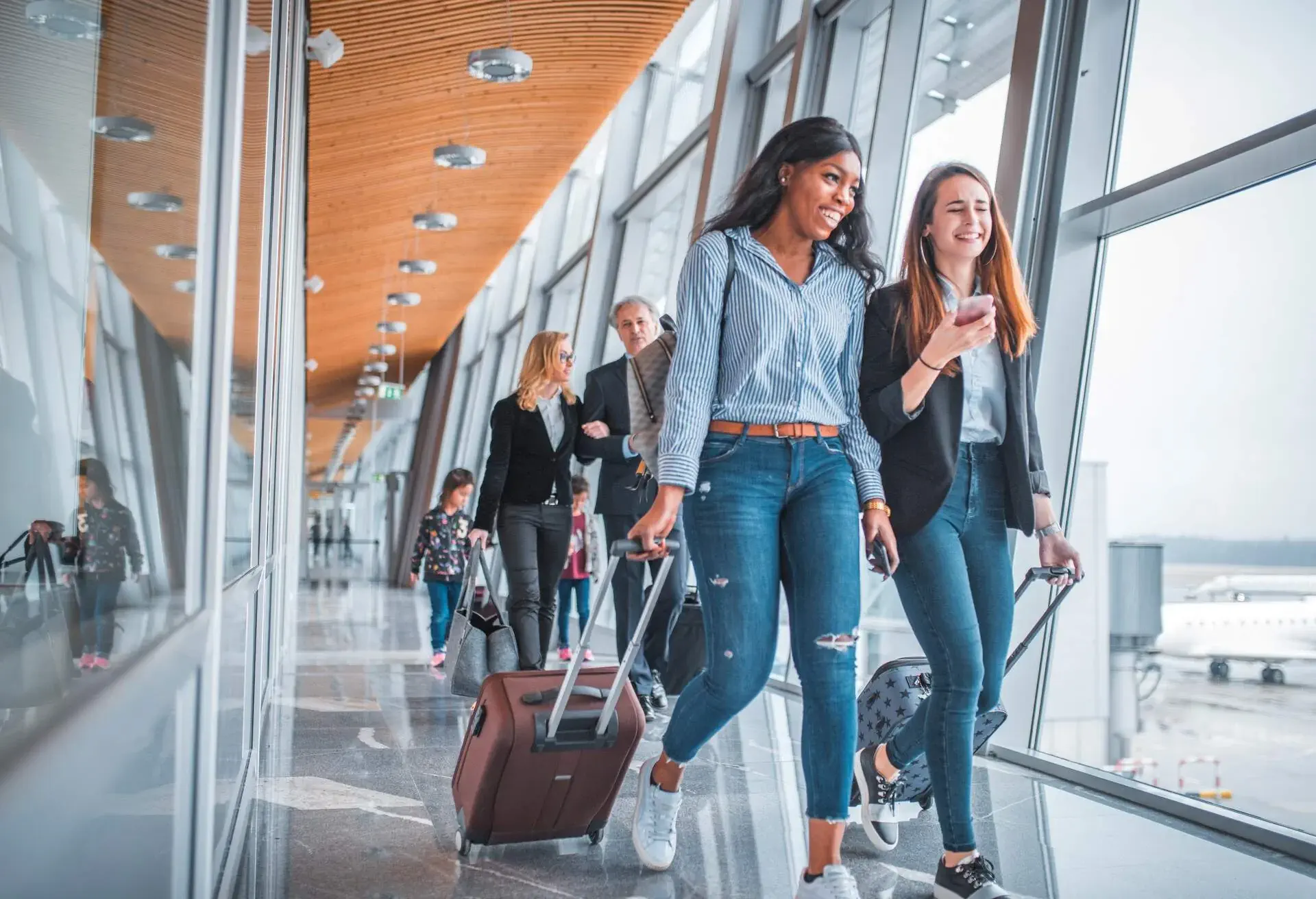
No matter what type of carry-on you choose to bring with you, we have 7 tips that will make the packing process a tad easier.
1. Choose a lighter carry-on suitcase
Because some airlines do weigh carry-on bags, it’s helpful to select a lightweight bag that won’t take up much of your total allowance. It’s also easier to lift these into the overhead bins during boarding.
2. Check the weather the day before you pack
Even if your destination is known for sunny skies or constant downpours, check the weather the day before flying. Weather patterns may seem stable at your destination, but you never know what the temperatures or precipitation will be on a specific day. So be sure you have the right clothing, shoes, and gear (like umbrellas) for the exact days you’ll be there. Don’t arrive unprepared for unusual weather.
And even if it’s hot and humid at your destination, always remember that airplanes are air conditioned! So make sure you bring some layers and socks for the plane.
3. Maximize your carry-on baggage allowance
If your airline only allows one total item, don’t be afraid to select the largest dimensions allowed. Use soft-sided carry-on bags, like duffels, you can easily squish into the measuring bin on more stringent airlines. That way, you may get away with packing more than you would in a hard-sided case. Don’t forget that roll-aboard bags also have wheels, which are count toward your size limit without providing any packing space.
4. Maximize your carry-on space
In addition to avoiding bulkier fabrics and items, packing techniques and tricks can also help you squeeze more into your carry-on bag. Roll your clothes rather than folding them to maximize space, and you may find fewer wrinkles, too. You can also stuff some rolled clothing inside shoes to save space and preserve shoe shape, but this otherwise dead space is also great for socks, underwear, or non-liquid toiletries. Stick whatever you want in here; just don’t leave that precious space empty.
Packing cubes also save space by compressing your clothing into a more compact space. As a bonus, they also keep your bag more organized. Just keep in mind that finding more space for extra items may push your carry-on bag over the weight limit if you get carried away.
5. Know where your liquids are
Depending on the airports you encounter and your personal security status, you may need to remove liquids from your carry-on during security screening. In these cases, keep liquids in a single bag, and make sure it’s in an easy-to-access area of your carry-on so you don’t struggle at the security checkpoint. The same may be true for larger electronics, like laptops and tablets.
6. Keep flight essentials together in one place
Try keeping all of these essentials in a drawstring pouch or fanny pack within your carry-on or personal item. In it you might want to include IDs, medication, earbuds, and a favorite snack. This will allow for easy access as you move through the airport, and it’ll help keep important items in one place on the plane. That way you’ll avoid leaving a stray passport or pair of reading glasses in the seat-back pocket!
7. Save a carry-on packing list
Create a comprehensive carry-on packing list a few days ahead of time, and review it each day before you leave. You probably won’t pack daily essentials, like medicines and toiletries, until the day of, making them easier to forget. This is especially necessary if this will be your only luggage. It’s also useful for everyone to ensure you don’t forget anything important. And don’t forget to use this list when re-packing to return home, so nothing gets left behind.
How to pack a carry-on FAQs
Any standard carry-on bag can easily hold enough clothing for four days, provided your outfits can go with just one or two pairs of shoes. This will only become trickier during colder visits when you’ll need to bulk up. For these trips, focus on thinner layering elements so heavy outer garments become less unnecessary, and reuse layers when you can.
Some say a carry-on should be able to hold up to ten days’ worth of travel, but even a week can be tricky for those who love a showier style. It’s still doable, though. Plan outfits with simple pieces that you can reuse to create new looks, and focus on accessories that can change frequently without taking up much valuable packing space. This is definitely a time for packing cubes.
Some carry-on bags come with a built-in garment bag for suits, but it’s not entirely necessary. The key is to make minimal folds, and not to compress or crowd the materials. Leave plenty of space and lay the loosely folded garments gently on top of your other items.
It’s time to start planning! Following above tips will take the stress out of packing a carry-on, from choosing the right airline to prepping your bag. Now that you’re confident in your carry-on abilities, take a look at some of this year’s travel trends, and start planning your next getaway. Here’s a pro tip to get you started: consider the slower travel months for reduced rates and minimized crowds!
Check out some of our favorite cheap flight routes
- Cheap flights to Las Vegas
- Cheap flights to New York
- Cheap flights to San Francisco
- Cheap flights to Miami
- Cheap flights to Chicago
⏰ Last update: April 2, 2025 – because staying informed makes travel smoother.

